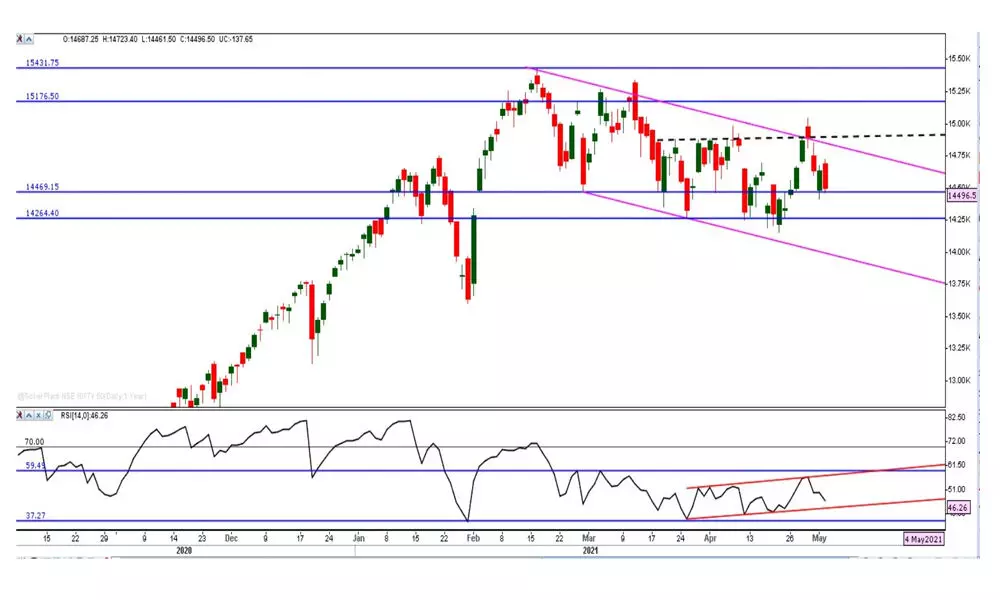Negative divergence indicates sell signal
image for illustrative purpose

The Indian stock market fell sharply by one per cent on the rising concerns over the growth. The NSE Nifty fell sharply by 137.86 points and settled at 14496.50. Barring PSE, CPSE and PSU Banks, all the sectoral indices declined. The PSU Bank index up by 3.44 per cent. The Nifty Pharma down by 2.02 per cent. All the other indices down by half a per cent an average. The overall market breadth is negative as 1078 declines and 808 advances. The positive momentum limited to one day, and the market resumed the downward move again.
The recovery of over 200 points in the previous session from the day's low was short-lived. The Nifty once again tested the 14,469 support. Since February 26, the Nifty tested this support several times. In fact, in the last seven days, it was hovering around this level four times. Today, it formed a dark cloud cover candle, as it opened with a gap up and closed near to yesterday's opening. The Nifty moving in a downward channel, and the leading indicator RSI in an upward channel. This negative divergence price makes a lower high, and the RSI makes a higher high, is giving a clear sell signal.
Andrew Caldwell's RSI edge rules are meeting for the first time. We have not seen this kind of negative divergence since March 2020. This measured move will test the channel's lower support line in the short term. This time it will violate the 14191 and probable test of below 14000 levels. Earlier, the RSI has broken out of a triangle, and the breakout proved failed one. All the directional movement indicators, +DMI, -DMI and the ADX are moving downwards. The MACD histogram shows the declaration in the bullish momentum. The weekly histogram clearly on the downside. Yesterday's high honoured the resistance point drawn from the previous supports on a 75-minute chart. With this technical evidence, it is not the time to be bullish now. The Nifty must cross the 14705 levels on a closing basis with a follow-through day. Until then, be avoid long positions.
— The writer is a financial journalist, technical analyst, and family fund manager

